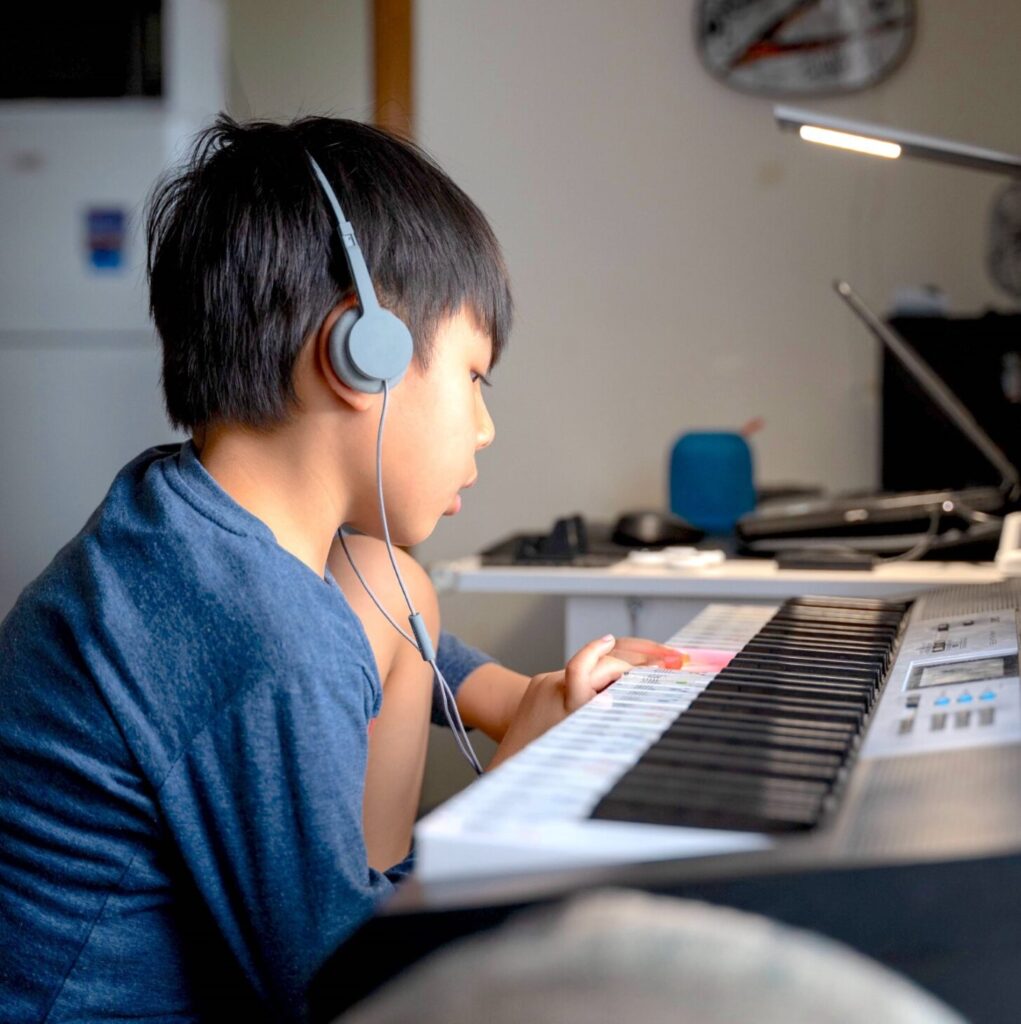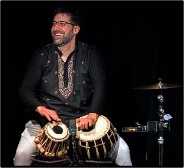
For the past 17 years, as a main component of our yearly music curriculum, I have been producing original music with K-12 students. By providing the tools, the time, and the guidance for students to create their own music, a creative classroom culture that has a life-long impact is cultivated daily.
Even creating just one song as a class can foster student-centered ownership, identity, musical analysis, creativity, collaboration, technical skill, reflection, refinement, relationships and community building. We utilize multi-track recording software, microphones, and all sorts of instruments to bring the students’ music to life in a ‘studio’ environment. The culmination of this work is a publicly shared album that we publish at the end of the year. Here is the latest example from my 3rd, 4th, and 5th graders at Pattengill Elementary.
The most important tool a teacher has when introducing a creative songwriting project is a recording device. From the moment you introduce the very idea of creating an original song, students will have ideas for how it should be, what the subject matter is, and even melodic and rhythmic ideas. I use an online app called Soundtrap and I will often start recording from the moment the students walk in the door. Good ideas can come at any time, and you want to be assured to capture them as they happen. I also have a google doc open to take notes such as key, lyrics, or thematic ideas. In a 30 minute recording of brainstorming, we may use just 1 or 2 ideas to develop our song, and that could be just 5-10 seconds of the entire recording. At the end of class I will do a quick edit to keep the ideas we want and hit save. This makes it easy to pick up exactly where we left off.
The next step is developing ideas into a song. It is impossible to get specific about exactly how to do this because every song develops differently, however, as the teacher, my job is to guide the students through ideas, keeping them on topic, helping them with rhyming and rhythms, labeling the sections of the music as it develops, and most notably, taking melodic ideas and harmonizing them. To do this I use a guitar or piano, trying chords along with melodies and creating as we go. There is no right way to develop a song, and it takes time to find your style, but when it works, a positive consensus comes easily.
Once the songs are finished, meaning the lyrics, chords and structure is in place, it is up to you as the teacher to make the actual recording of the piece. This can be as simple as practicing the piece as a group and recording one good take with one mic, or, you can do as I have learned to do and make a multitrack backing track with drums, bass, guitar, percussion, etc. Once I have a backing track, each student has the opportunity to record their voice individually. This method takes time, but the end result is worth it.
However much time and effort you put into creating original music with your students, the end result will be that you have given your students ownership of the music making process from the first idea of the song to the final recording. This empowers students to begin their own journey of creation. In my classroom students engage in multiple “Creative Days” where they are given an entire class time to simply create music utilizing apps like Sountrap, Chrome Music Lab, and Groove Pizza. The students build beats, stack loops, record themselves singing, playing instruments, beatboxing, rhyming and rapping. They collaborate with each other, experiment with found sounds and effects, create jingles for real and imaginary companies, make songs for their friends and loved ones and so much more. I am at a public school with around 200 3rd-5th grade students and at the end of the year, my students had shared over 1200 pieces of music with me!
My current job title is Vocal Music Teacher, and while I do spend a fair amount of time on singing songs and developing rhythm and pitch, I know that providing my students with the tools, time, and guidance to create music on their own is allowing them to find and empower their inner voice. It gives them ownership and agency in how they approach learning, listening, appreciating, and performing. This empowerment inevitably crosses over into other areas of their lives and can be applied to anything they take on that they see as their own. I, for one, see this as the most essential and important aspects of my job as an educator.
I encourage all educators to allow your students to be truly creative and add “Creative Days” to your classroom practice. As we focus on technique, skill building, and proficiency, we must keep in mind that the endgame for our students is to have the capacity to utilize these tools to find out and express who they are as individuals. That requires the right tools, ample amounts of time, and good guidance. Indeed, any creative endeavor is a leap of faith into the unknown, but after all, that is precisely what we, as humans, must do every day.
_________________________________________________________________________________________________________
 In addition to John Churchville’s 17 years in K-12 music classrooms, he is a Grammy award winning tabla player living in Ann Arbor and teaching at Pattengill Elementary. John got his start in music in Marquette then moved west to attend the esteemed California Institute of the Arts where he earned a degree in World Music Performance. He has since earned his Master’s in Music Education from the University of Michigan. John developed a nationally recognized and award winning elementary music program with a focus on student ownership, creativity, and technology integration. John serves as the MACC Regional Lead for Region 9 of the Michigan Regional Arts Education Networks coordinated by MAEIA, the Michigan Arts and Culture Council, and local arts educators and ambassadors. John has forged a unique path in both the music scene and in music education.
In addition to John Churchville’s 17 years in K-12 music classrooms, he is a Grammy award winning tabla player living in Ann Arbor and teaching at Pattengill Elementary. John got his start in music in Marquette then moved west to attend the esteemed California Institute of the Arts where he earned a degree in World Music Performance. He has since earned his Master’s in Music Education from the University of Michigan. John developed a nationally recognized and award winning elementary music program with a focus on student ownership, creativity, and technology integration. John serves as the MACC Regional Lead for Region 9 of the Michigan Regional Arts Education Networks coordinated by MAEIA, the Michigan Arts and Culture Council, and local arts educators and ambassadors. John has forged a unique path in both the music scene and in music education.
Images courtesy of John Churchville.
Click here for a Printer friendly version of this article.
Leave a Reply
You must be logged in to post a comment. Don't have an account? Register Here.